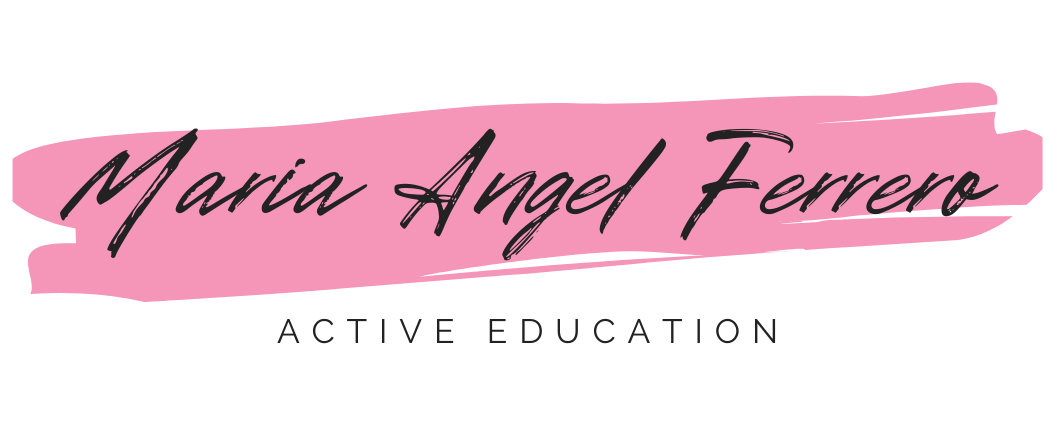Redefining Student’s Learning Assessment for Online Teaching
We are changing approaches, shifting from traditional master class to hybrid, blended, and reverse learning. So why are we taking so much time in changing also the way we assess students?
Why do we still think multiple-choice exams, exercise calculations, or case studies are the best and only way to assess learning and knowledge? Who are we kidding?
The pandemic situation and the abrupt shift of schools and universities to remote teaching are finally opening our eyes: the way we assess students’ knowledge and skills need to change.
I’ve seen many high-ranked schools investing in very expensive software for remote testing and proctoring. These are technologies guaranteeing students don’t cheat during a remote exam sitting session. The software locks down the student device to ensure they open no other windows and provides video and audio monitoring throughout the entire exam.
Hello GDPR and goodbye student privacy!
I’ve seen also professors asking the students to do a 360° tour of their rooms before sitting the exam to ensure there is no whistleblower.
Is this what we want to do now? Are we changing our roles into prison guards?
Traditional assessment methods are far from being a fair indicator of intelligence, knowledge, skills, or effort. And they don’t reflect whatsoever the abilities and preparedness for work life.
Poor performance in an exam has nothing to do with incompetence or lack of knowledge. Many students suffer from attention deficit, hyperactive disorder (ADHD), dyslexia, and other forms of attention and learning disorders. Other students just suffer from anxiety, stress, and fear of judgment and evaluation. Others have just bad luck.
The current situation is probably the best opportunity for us, educators, to change the way we approach student assessment of knowledge and learning outcomes.
We need to think about more appropriate assessment methods that encourage reflection, learning, and skills development.
Below, I discuss different effective methods for assessing students’ learning outcomes both online and offline.
1. Discussions and Socratic seminars
Online discussions and Socratic seminars are excellent ways to assess students’ understanding, reflection, and application of concepts. Asking specific, open-ended questions (or topics) can lead to mindful discussions and to the creation of knowledge. Students can share and respond to each other’s ideas with text, images, and videos. These can unfold asynchronously (over time) through open public forums like Quora or Reddit — functionalities also available in Moodle and Canvas. Alternatively, the discussion can happen synchronously by using videoconferencing tools like Zoom and other knowledge management and communication systems like Slack. Here, it’s important to clarify from the beginning your expectations on student’s participation and how their participation will translate into grades.
2. Explanatory student’s videos
Students can be really creative when it comes to recording and editing videos. You can capitalize on those skills and ask them to create short explanatory videos to present a concept learned in class. They can use animations, interviews, hand drawing, or slide decks to create their videos. Then they can share it into the course platform (like Canvas or Moodle) so that their classmates can access it and give their feedback. You can also use social media video sharing apps like Flipgrid, Instagram, or Tiktok. The choice should depend on how you want to manage Data and how comfortable you (and your students) feel with using social media. Flipgrid in this case can be the best compromise as it’s closed only for your class and you have more control over data protection and safety.
3. Self-assessment and retrospective learning
Self-assessment is a great opportunity for students to share their thoughts on the course, the process of learning, their performance, and many more. No one is better placed to know how much effort they put in learning and how much they’ve learned that students themselves. Self-assessment is not only a mean to know how good a student performs in a class, but is an opportunity for the student to learn to judge objectively his/her skills and knowledge. But self-assessment is not always easy. It’s crucial to clarify to the student the importance of honesty, transparency, and the concept of impostor syndrome when using self-assessment. Instructors can provide a sample assessment grid and questions to facilitate the activity.
The agile methodology for management and innovation uses “agile retrospectives” as an opportunity to learn and improve by reflecting on past events and behaviors. The idea of retrospectives is to have participants share their thoughts after each lecture on the following questions:
- What I’ve learned?
- What worked well? What did I enjoy?
- What didn’t work well? What did I find challenging?
- What are we going to try to do differently?
There are plenty of retrospective activities to derive the lessons learned, and many of them can be done remotely through a visual collaboration platform. But this can also be done asynchronously. Students can use original formats to share their retrospective lessons. Blog entries, 1-minute videos, mind maps, picture collage. Apps such Flipgrid, Wakalet, Instagram, or Pinterest work great for this kind of activity.
4. Simulations and Labs
Students can engage with real-world data or use simulations of laboratory environments. These are useful for practicing skills of the discipline and for engaging in real-world problems. While most simulation games are pricy, you can also find top quality free simulation games on the web. You can also create your own games and simulations easily, even when you don’t know how to code. Nick Case has built different simulations and game designer tools for people with no coding skills, check them out here. You can also use scratch to code games easily.
5. Group Projects
Online collaborations allow students to develop team spirit and team management skills. Working in teams is not only good for students, but it’s also good for educators, as assessment and tutoring can be easier. You can divide your class into several teams of up to 4 students so that each team works on a specific project. There are different alternatives for group projects. You can assign different topics to each group or the same problem to all the teams. Each team approaches differently the topic even when the major topic is shared by the entire class. Canva or Moodle allows you to create group assignments and divide the class into teams. Zoom, BigBlueButton, Glowbl, and Meet also allow you separate teams in different rooms, so when having online video conferencing you can provide personalized tutoring to each group. You can also use visual collaboration software like Mural or Miro for virtual teamwork.
6. Peer Review
Feedback from peers can motivate students to learn from each other. It is also probably one of the most effective approaches to learning. Evaluating peer work helps students to better grab concepts and knowledge. They not only understand better the topics, but they also develop critical and analytical thinking. Correcting the work of others requires students to understand the what, the why, and the how. It’s important to guide students to give each other valuable feedback using rubrics or other prompts. Be sure you provide a sample evaluation grid and examples on how to provide constructive feedback. Provide a list of guiding questions for them to ask each other and so they can evaluate objectively their classmates. To ensure the quality of peer review, you can also include a grade to the peer review activity. You can ask students to evaluate the quality and usefulness of the feedback and they received from their peers.
7. Blogs
Journaling is a great way to reflect on learning and documenting the process. Blogs can allow students to communicate their ideas in a more creative and informal format. There are several platforms that can be used for free by students and professors to create specific class blogs. You can use Medium and create a publication — a collection of stories — for each classroom. Students will then submit their pieces to the publication and you will review them. They are learning not only to write better but also to create content for the online community. They can learn how to apply SEO techniques and digital marketing. But mostly they can develop self-awareness and reflective thinking. There are other platforms that work for blogging like Wakalet, Blogger, or WordPress. Chose the one you prefer.
8.Creative Projects
Creativity is one of the most wanted skills by recruiters. Unfortunately, we give little space to boost student creativity. Using creative projects as a means of assessment is an opportunity to improve this skill in students and improve their learning. Creative projects can include original formats: Music, photography, writing, drawing, painting, etc. The idea is to let student’s imagination fly and use their artistic side to show their learning. Using this kind of format not only improves students’ creativity but also their ability to understand and digest the concepts and knowledge gained during the course. It also improves problem-solving skills and encourages students to think about a problem from original angles. Also, It’s a useful method to solve wicked problems. It’s important to define the criteria of assessment and how it translates into grades. For example, originality might be an important aspect of the grade, but also the ability to pass on knowledge to their classmates — that is, clarity of their presentation — is essential.
9. Open innovation challenges
Professors can use crowdsourcing or open innovation platforms to encourage students to work on real-life problems. Platforms like Agorize connects organizations with students to solve strategic problems and find innovative solutions. Students are confronted with real business (or social) problems and have to apply all their knowledge to come up with a suitable solution. Open innovation platforms are a great opportunity for students to team up with students all around the globe and collaborate virtually while applying their expertise to respond to the challenge. Open innovation promotes critical thinking, the ability to overcome concrete problems, creativity, teamwork, and innovative behavior. Also, students are more likely to show motivation and commitment to their learning process, as they apply their skills in real-life situations and get immediate feedback from the organizations and the crowd.
10. Games & Interactive Competitions
Hosting interactive quizzes during your online sessions are a great way to evaluate student knowledge and engagement. The most famous interactive quiz platform is Kahoot, a free student-response that uses all sorts of gamification techniques to engage students’ participation and enhance learning. With Kahoot, you can both host live quizzes as well as self-paced challenges for out-of-class review. Kahoot games can be played in single mode or in team mode and offers plenty of fun features to stimulate students to play and learn. Another great platform for live learning games is Factile. With Factile you can either host jeopardy games, regular multiple choice quizzes, memory games, and create study flashcards to improve students’ learning proficiency. As Kahoot, Factile can be played in teams or individually. You can also use Flipgrid, Flippitynet, Quizlet, and Socratic to create games.

